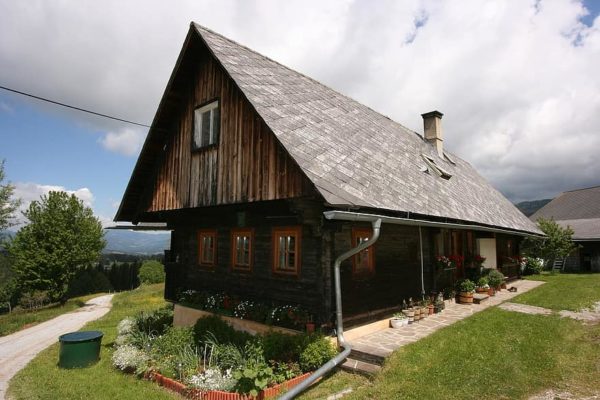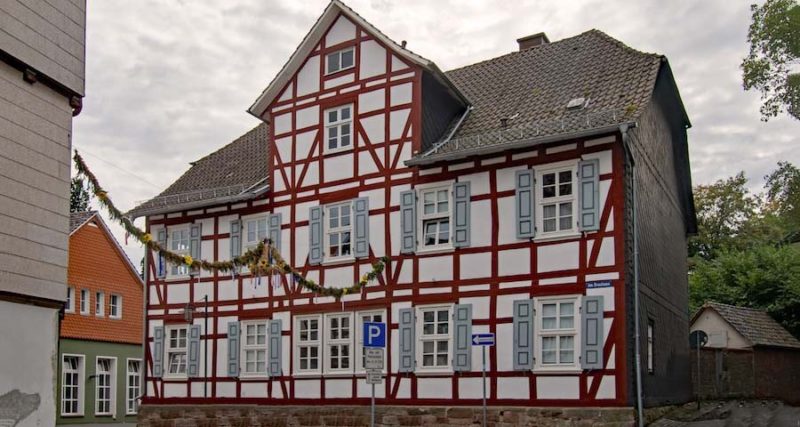What You Can Expect When Visiting a Traditional German House
Whether you’re planning to move to Germany, or you’re visiting someone’s home, it’s best to be familiar with the German home. German houses can be very unique, and yet traditional at the same time. Learning about German homes is more than just knowing what the furniture or layout is like. It’s a glimpse into the everyday lives of German people. So, here’s what you should expect in a typical German home. Perhaps this will motivate you to progress to German fluency.
German Electrical Awareness at Home
Apartments in Germany are not furnished with appliances. So, if you’re relocating with your appliances, keep in mind that there are differences in the electrical system. Germany uses the metric system. And outlets have European plugs. This means that American or British appliances will need adaptors. German voltage is 220 to 240 volts and American appliances are usually made for 110 volts.
TVs made in America won’t work in Germany, or anywhere in Europe for that matter. British TVs will work in Germany, but only after adjustments, and there’s also the issue with the plug. Germany uses PAL B system televisions. If you’re bringing a collection of DVDs, they will need a chip installed as they won’t play in a European machine. Computers usually need only an adaptor.

Renting a German Home
The quickest way to find a place is through a real estate agent. But, they may require three months’ rent in advance; that’s in addition to your security deposit. They will take care of everything, including legalities. You can also check the newspaper listings or search rental websites on the internet.
Rental apartments in Germany bring new meaning to the term “unfurnished.” It’s not just a lack of a comfy couch in the living room. Unfurnished in Germany means no cabinets in the kitchen, no appliances, and sometimes even no fittings for fixtures. Make sure you read the terms thoroughly before you sign a lease for an unfurnished German home.
Typical German House Size and Layout
German downtown apartments may be a little bit smaller than in America. Meanwhile, German houses have larger rooms. Some of the traditional nineteenth- and early twentieth-century apartments, houses, and chalet-style houses found in Bavaria and other parts of Germany can be especially spacious.
In addition, the close quarters make good relations with neighbors an absolute necessity. If you’re throwing a party, make sure you’re not too loud. Your German neighbors may mind the noise. New residents should invite their neighbors to visit if possible. But, don’t appear intrusive – politeness to neighbors is to be expected, but closeness is not.
German Home Ownership vs Renting
Home ownership is less common in Germany than it is in other parts of the Western world. About 43% of Germans own their homes, as opposed to 62% in the US and 65% in the UK. Most Germans rent, and spend 25-33% of their net income on housing and accommodation. Tenants enjoy considerable legal protection. As a result, landlords may come across as somewhat choosy about tenants they’re willing to accept.
German houses and apartments are always well-maintained. Germans are very house proud. They’re usually not just proud of the house, but also the area it’s in. By law, German homeowners need to keep the sidewalks in front of their house clean. This cleanliness can definitely make a German home even homier.

Zimmer Frei or a German Hostel?
Even if you’re not planning to move to Germany, there are plenty of typical German travel accommodations you can choose from.
A “Gasthaus” is usually a hotel, and it’s a more expensive option. “Hotel garnis” are small hotels where you get breakfast, but no dinner. If you want to stay at a bar/inn, the German equivalent is a “Gasthof”. This is an exciting and cheap option. And finally, “Pensionen” offer an authentic German experience. These B&B style accommodations are usually family-run, so you can get to know real German locals. They’re the perfect people to practice your German speaking skills with.
If you’re trying to find accommodation in Germany, always lookout for a sign that says “Zimmer Frei”. This translates to “room available” in English. You’ll see this sign a lot in Germany. But, of course, you don’t have to hunt down the available accommodations like this anymore. You can always look online or ask about hotels in tourist offices.
Finally, you can always opt for a cheap German hostel. The German Youth Hostel Association (DJH, Deutsches Jugendherbergswerk) operates reputable ones. You need to register as a member of IYHA (International Youth Hostel Association) to access the youth hostels.
Learn German to Discover the Typical Home
Summarizing what the typical German home is like is not easy. Every person has different tastes and comforts. But, the one thing that’s definitely true for all German homes is that they speak German in them. So, if you truly want to know what a traditional German house is like, you have to learn the language. And the best way to do that is with OptiLingo.
OptiLingo is a language learning app that gets you to fluency fast. It gives you the most useful and common German words and phrases. So, you won’t waste time trying to learn unnecessary grammar. Instead, you’ll learn exactly how the locals speak. Have authentic German conversations when you use a great app like OptiLingo!







